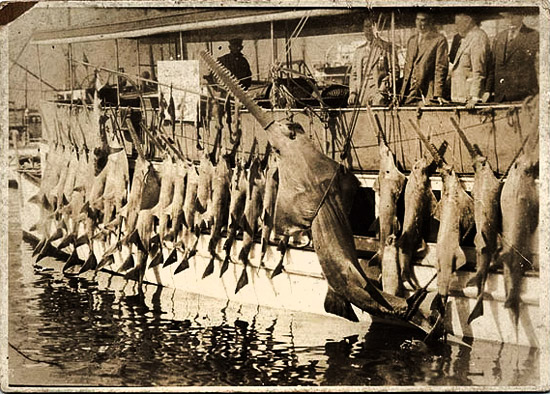A Fish Tale: Sawfish Fact and Fiction Through History
By Carmen Elenberger
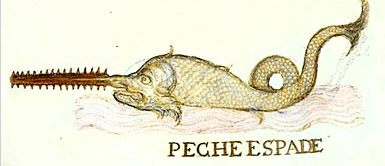 For years sawfish carried a reputation as a formidable denizen of the deep. Their reputation was spread by writers such as Jules Verne, whose famous Captain Nemo instructed his sailors in Twenty Thousand Leagues Under The Sea to “leave the unfortunate cetacea alone. They have plenty of natural enemies- cachalots, swordfish, and sawfish- without your troubling them.”
For years sawfish carried a reputation as a formidable denizen of the deep. Their reputation was spread by writers such as Jules Verne, whose famous Captain Nemo instructed his sailors in Twenty Thousand Leagues Under The Sea to “leave the unfortunate cetacea alone. They have plenty of natural enemies- cachalots, swordfish, and sawfish- without your troubling them.”
Despite the advice, sawfish neither consume marine mammals nor pose a significant threat to them. Their dangerous nature depends upon perspective and who’s telling the tale. Throughout history, sawfish portrayals have been less than true to the facts, whether the misinformed party is the media, historians, or the fishermen who encounter these ancient fish. Even scientists held a less than complete picture- but now, in 2011, with a decade’s research on the part of the International Sawfish Encounter Database (ISED) the facts are becoming clearer.
The database strives to compile a complete record of every known sawfish encounter, both smalltooth (Pristis pectinata) and largetooth (Pristis perotteti). As of 2011 the collection contained nearly 6,000 archived reports, from historic accounts on microfilm, new articles, and recent eye- witness accounts collected since the project began. With such an expanded picture, scientists can track the growth and range of the sawfish population and shed further light on the real truth about sawfish.
Below are some commonly held misconceptions or popular tales about sawfish illuminated and refuted by scientific research.
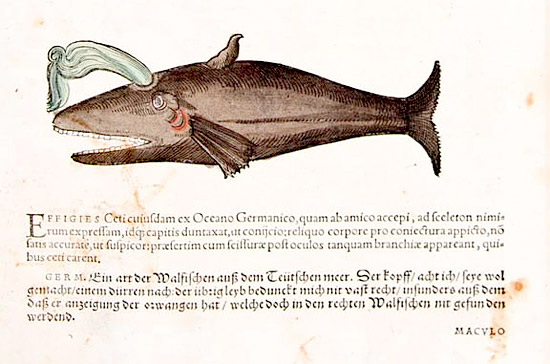
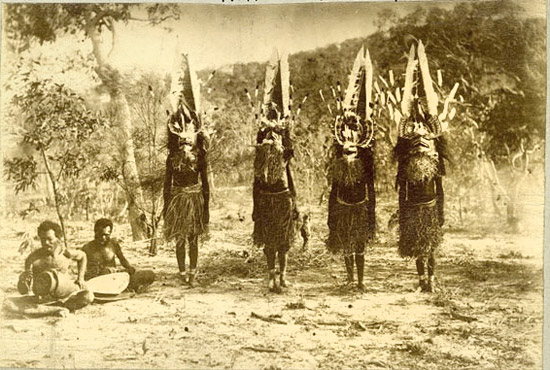
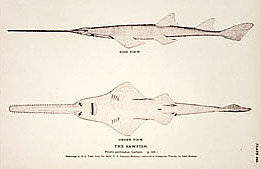 False. Throughout millions of years, elongated rostra with lateral teeth evolved independently at least three times. Sclerorhynchids, an extinct family of sawfish, first evolved in the Cretaceous period. Existing sawfish species belong to the Pristidae family, and are a type of ray. Pristiophorids, or sawsharks, are a distantly related shark species that also wield a toothed-rostrum.
False. Throughout millions of years, elongated rostra with lateral teeth evolved independently at least three times. Sclerorhynchids, an extinct family of sawfish, first evolved in the Cretaceous period. Existing sawfish species belong to the Pristidae family, and are a type of ray. Pristiophorids, or sawsharks, are a distantly related shark species that also wield a toothed-rostrum.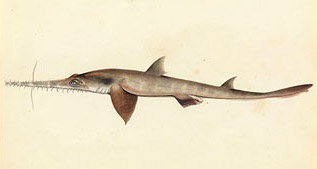
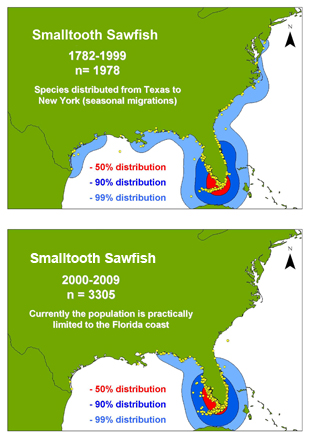 Not true-smalltooth sawfish populations have been decimated to 95 percent of the abundance they previously sustained in the past century. Their distribution is described as circumtropical, and their range in the Northwestern Atlantic once included territory from Texas northward as far as New York. Their environmental constraints include water temperatures of at least 16-18 degrees Celsius and availability of coastal areas with suitable nursery habitat, so encounters north of Florida are thought to be a result of seasonal migrations of larger individuals in the population. Northern sightings are now rare, and the last stronghold for smalltooth sawfish is in marine and estuarine waters off of southwestern Florida.
Not true-smalltooth sawfish populations have been decimated to 95 percent of the abundance they previously sustained in the past century. Their distribution is described as circumtropical, and their range in the Northwestern Atlantic once included territory from Texas northward as far as New York. Their environmental constraints include water temperatures of at least 16-18 degrees Celsius and availability of coastal areas with suitable nursery habitat, so encounters north of Florida are thought to be a result of seasonal migrations of larger individuals in the population. Northern sightings are now rare, and the last stronghold for smalltooth sawfish is in marine and estuarine waters off of southwestern Florida.